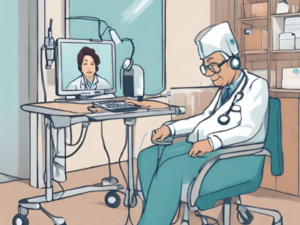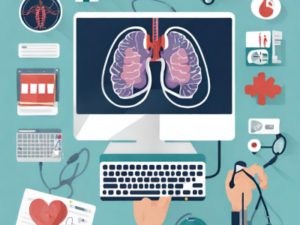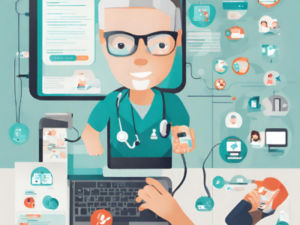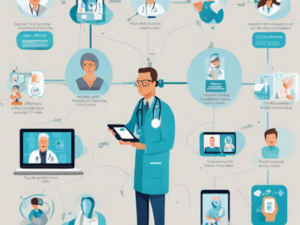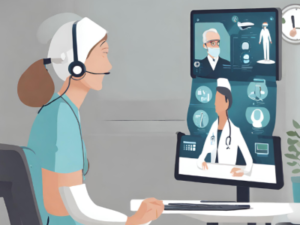Module 5: Managing chronic clinical conditions through telecare
- Description
- Curriculum
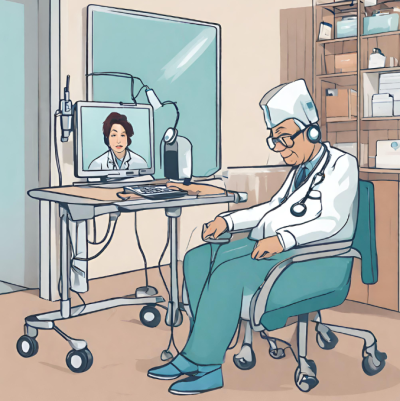
-
1Contents
-
2Course description
Medical conditions are often categorized as acute or chronic. Acute illnesses generally develop suddenly and last a short time, often only a few days or weeks.
Chronic conditions develop slowly and may worsen over an extended period of time—months to years.
Chronic conditions are slower to develop, may progress over time, and may have any number of warning signs or no signs at all. Common chronic conditions are diabetes, heart disease, high blood pressure, Cancer, Chronic Obstructive Pulmonary Disease (COPD)
-
3LESSON 1: Managing chronic clinical conditions through telecare. HYPERTENSION
LESSON 1: Managing chronic clinical conditions through telecare. HYPERTENSION
Introduction
DEFINITION OF HYPERTENSION
Hypertension is defined the chronic elevation in blood pressure >140/90; etiology unknown in 80–95% of patients (“essential hypertension”). Always consider a secondary correctable form of hypertension, especially in patients under age 30 or those who become hypertensive after 55. Isolated systolic hypertension (systolic ≥ 140, diastolic < 90) most common in elderly pts, due to reduced vascular compliance.1
Clinically, hypertension may be defined as that level of blood pressure at which the institution of therapy reduces blood pressure– related morbidity and mortality.
Your blood pressure is recorded as two numbers:
- Systolic blood pressure (the first number) – indicates how much pressure your blood is exerting against your artery walls when the heart contracts.
- Diastolic blood pressure (the second number) – indicates how much pressure your blood is exerting against your artery walls while the heart muscle is resting between contractions.2

Important are the recent publications in JAMA by the US Preventive Services Task Force on arterial hypertension in children and adolescents. It is a clinical entity which even today is characterized by research interest and there are unanswered questions regarding the exact diagnosis, prognostic significance as well as treatment. Arterial hypertension in 1- to 13-year-olds is defined as office blood pressure greater than or equal to 130/80mmHg, on three separate readings, or blood pressure greater than or equal to the 95th percentile for children of the same sex, age, and height. At the age of 13 and over, arterial hypertension is defined as office blood pressure greater than or equal to 130/80mmHg. Blood pressures between the 90th and 95th percentiles are considered prehypertensive and are an indication for lifestyle interventions.3, 4
General Aim
This module aims to acquire basic knowledge about hypertension and the ways of dealing with it for its management in the context of telehealth.
Objectives
Determine the significance of measuring and managing hypertension remotely.
Examine the effects of serious hypertension and taking measures to prevent it.
Develop the ability to create personalized care plans for each of patients with hypertension.
Learning Outcomes
a) Knowledge
Understanding the clinical features of hypertension.
Understand the symptoms of hypertension.
Develop awareness of triggers of hypertension.
Gain knowledge of treating hypertension remotely.
Understand the principles and importance of treating hypertension remotely.
Gain proficiency in ways of preventing hypertension.
Demonstrate proficiency in conducting management of hypertension.
b) Skills
Develop skills to demonstrate treating patients hypertension remotely
Acquire skills to prevent hypertension
Cultivate skills in conducting management of hypertension.
Enhance skills for controlling symptoms of hypertension.
c) Competence
Apply knowledge of symptoms of hypertension
Exhibit competence in managing hypertension in remote care settings.
Display proficiency in treating hypertension remotely.
Efficiently conduct virtual consultations and utilize telecommunication technologies to assess and prioritize patients with hypertension
Develop the ability to create personalized care plans for each for patients with hypertension.
-
4LESSON 2: Managing chronic clinical conditions through telecare DIABETES MELLITUS OR DIABETES
INTRODUCTION
Diabetes, also known as diabetes mellitus, is a group of common endocrine diseases characterized by sustained high blood sugar levels Diabetes is a condition related to the availability and effectiveness of insulin within the body. A chronic (long-lasting) disease that affects how body turns food into energy. The premature morbidity, mortality, reduced life expectancy and financial and other costs of diabetes make it an important public health condition.
Definition:
· “A metabolic disease in which the body’s inability to produce any or enough insulin causes elevated levels of glucose in the blood.”
· “A multisystem disease related to abnormal insulin production, or impaired insulin utilization, or both of the above.”
· “A chronic disease that occurs either when the pancreas does not produce enough insulin or when the body cannot effectively use the insulin it produces.”
Insulin is an anabolic hormone that is normally present in individuals with healthy diets. It is an important signaling factor that stimulates storage of excess nutrients as glycogen and triglycerides, in the form of adipose tissue fat. Insulin primarily targets the liver, adipose tissue, and striated muscles. Insulin synthesis and release is stimulated by glucose, but potentiated by the amino acids. Within the liver, insulin stimulates glycogenesis, synthesis of fatty acids, glycolysis, and the pentose phosphate pathway. In adipose tissue, insulin stimulates uptake of glucose and fatty acids, as well as triglyceride synthesis, also known as energy storage. In the skeletal muscles, insulin stimulates glucose uptake, glycogenesis, and the synthesis of proteins. It should be understood that insulin does not influence metabolism of glucose in the brain, or in the red blood cells. Insulin affects metabolism of cells with insulin receptors. These include the hepatocytes, adipocytes, and muscle cells.

The body breaks down most of the food into sugar (glucose) and releases it into bloodstream. When blood sugar goes up, it signals your pancreas to release insulin. Insulin acts like a key to let the blood sugar into body’s cells for use as energy.

With diabetes, body doesn’t make enough insulin or can’t use it as well as it should. When there isn’t enough insulin or cells stop responding to insulin, too much blood sugar stays in bloodstream. Over time, that can cause serious health problems, such as heart disease, vision loss, and kidney disease.
Type 1 diabetes is characterized by a total lack of insulin. Type 2 diabetes involves resistance of the body’s peripheral tissues to the effects of insulin. Both forms do not have the signaling effect of insulin when glucagon and other metabolic signals are present in normal or high levels.
Both forms of diabetes can lead to multisystem complications of microvascular endpoints, including retinopathy, nephropathy and neuropathy, and macrovascular endpoints including ischaemic heart disease, stroke and peripheral vascular disease.
General Aim
This module aims to acquire basic knowledge about diabetes and the ways of dealing with it for its management in the context of telehealth.
Objectives
Determine the significance of measuring and controlling diabetes remotely.
Display proficiency in conducting Blood glucose testing
Managing chronic and acute complications of diabetes
Learning Outcomes
a) Knowledge
Understanding the clinical features of diabetes.
Understand the symptoms of diabetes.
Gain knowledge of treating diabetes remotely.
Demonstrate proficiency in conducting management of acute and chronic complications of diabetes.
b) Skills
Develop skills to demonstrate treating patients with diabetes remotely
Cultivate skills in conducting management of diabetes
Enhance skills for controlling symptoms of diabetes.
c) Competence
Apply knowledge of symptoms of diabetes
Exhibit competence in managing diabetes complications in remote care settings.
Display proficiency in treating diabetes remotely.
Efficiently conduct virtual consultations and utilize telecommunication technologies to assess and prioritize patients with diabetes
Develop the ability to create personalized care plans for each for patients with diabetes.
-
5LESSON 3: Managing chronic clinical conditions through telecare HEART FAILURE
INTRODUCTION
Heart failure (HF) is a common final pathway for most chronic cardiovascular diseases including hypertension, coronary artery disease, and valvular heart disease.
The American College of Cardiology Foundation/American Heart Association (ACCF/AHA) and Heart Failure Society of America (HFSA) guidelines define HF as a complex clinical syndrome that results from any structural or functional impairment of ventricular filling or ejection of blood leading to cardinal manifestations of dyspnea, fatigue, and fluid retention.
The European Society of Cardiology’s (ESC) definition emphasizes typical symptoms (e.g., breathlessness, ankle swelling, and fatigue) and signs (e.g., elevated jugular venous pressure, pulmonary crackles, and peripheral edema) caused by a structural and/or functional cardiac abnormality, resulting in a reduced cardiac output and/or elevated intracardiac pressures at rest or during stress.
There are two types of heart failure:
· Chronic heart failure describes patients with longstanding (e.g., months to years) symptoms.
· Acute heart failure, refers to the rapid onset or worsening of symptoms of HF. Most episodes of acute HF result from worsening of chronic HF, but ∼20% are due to new- onset HF that can occur in the setting of acute coronary syndrome, acute valvular dysfunction, hypertensive urgency, or post cardiotomy syndrome.
General Aim
This module aims to acquire basic knowledge about heart failure and the ways of dealing with it for its management in the context of telehealth.
Objectives
Determine the significance of measuring and controlling heart failure remotely.
Display proficiency in conducting management of heart failure
Managing virtual consultations and telecommunication for treating heart failure
LEARNING OUTCOMES
A) Knowledge
1. Understanding the clinical features of heart failure.
2. Understand the symptoms of heart failure.
3. Develop awareness of triggers of heart failure.
4. Gain knowledge of treating heart failure remotely.
5. Understand the principles and importance of treating heart failure remotely.
6. Demonstrate proficiency in conducting management of heart failure.
B) Skills
1. Develop skills to demonstrate treating patients’ heart failure remotely
2. Cultivate skills in conducting management of heart failure.
3. Enhance skills for controlling symptoms of heart failure.
C) Competence
1. Apply knowledge of symptoms of heart failure
2. Exhibit competence in managing heart failure in remote care settings.
3. Display proficiency in treating heart failure remotely.
4. Efficiently conduct virtual consultations and utilize telecommunication technologies to assess and prioritize patients with heart failure.
5. Develop the ability to create personalized care plans for each for patients with heart failure.
-
6LESSON 4: Managing chronic clinical conditions through telecare. Telecare for patients with Chronic Obstructive Pulmonary Disease and Asthma
Introduction
Chronic Obstructive Pulmonary Disease (COPD) is a term that essentially encompasses a series of conditions with multiple causes that lead to airflow limitation that is not fully reversible (Agustí & Hogg, 2019; Vogelmeier et al., 2017). COPD could therefore be better defined as a clinical syndrome characterized by chronic respiratory symptoms, structural lung abnormalities (airway disease, emphysema or both), impaired lung function (mainly airflow limitation that is poorly reversible), or any combination of these (Celli et al., 2018). Patients with COPD are at higher risk than patients without COPD for developing coexisting conditions associated with poor outcomes, including death.
COPD is mainly a smoking-related disorder. Although the disease becomes clinically apparent around the age of 40-50 years, its origins can start very early in life. Different risk factors in very early life - i.e. in utero and during early childhood - lead to the development of COPD in later life. Although smoking is the main environmental risk factor for COPD, about a third of COPD sufferers worldwide are non-smokers. Pollutants, such as smoke from biomass fuels used for cooking and heating, are also important environmental risk factors for COPD in many parts of the world. In addition, coexisting conditions are particularly prevalent among COPD patients but are largely unrelated to lung function. Therefore, COPD can be considered as the pulmonary component of a systemic and multimorbidity syndrome (Agustí & Hogg, 2019).

Figure 1: Graphical representation of risk factors for chronic obstructive pulmonary disease at different stages of life.
Source:(Postma et al., 2015)
General Aim
This module aims to acquire basic knowledge about Chronic Obstructive Pulmonary Disease (COPD) and the ways of dealing with it for its management in the context of telehealth.
Objectives
Determine the significance of managing COPD remotely.
Display proficiency in conducting management of COPD
Managing virtual consultations and telecommunication for treating patients with COPD
Learning Outcomes
A) Knowledge
Understanding the clinical features of COPD.
Understand the symptoms of COPD.
Gain knowledge of treating COPD remotely.
B)Skills
Develop skills to demonstrate treating patients with COPD remotely.
Enhance skills for controlling symptoms of COPD.
C)Competence
· Exhibit competence in managing COPD in remote care settings.
Efficiently conduct virtual consultations and utilize telecommunication technologies to assess and prioritize patients with COPD.
Develop the ability to create personalized care plans for each for patients with COPD.
-
7Lesson 5: Managing chronic clinical conditions through telecare Oncology telecare
Introduction
Cancer is a chronic disease with recurrent and long-lasting stages. The prevalence rate of cancer was 248.392 patients. Depending on the type of cancer, its stage, and the patient’s condition, there are many types of cancer treatment such as surgery, radiotherapy, immunotherapy, and chemotherapy. Chemotherapy is still used as the primary or sole treatment for cancer. This treatment may damage or kill any rapidly dividing cell, tumor or normal cells. Damage to healthy cells leads to side effects including diarrhea, low blood pressure, drowsiness, constipation, nausea and vomiting, hair loss, fatigue, muscle aches, weight changes, and skin problems.
However, most patients and their caregivers have little knowledge about the side effects associated with these cancer treatments, and how to manage them. Therefore, they incur high costs for frequent visits to hospital or their treatment provider due to a lack of information and knowledge about common or serious side effects, stopping the treatment, and worsening of symptoms. These issues may be due to a lack of available and active supportive care for patient counseling and education which requires the effective teamwork of health care providers, especially nurses and access to the best available resources and technologies.
Telecommunication is one of the educational and follow-up methods used for cancer care by nurses. This communication is an effective method for providing low-cost supportive care and improving the relationship between patient and professionals, and removing time and space barriers to access to cancer care. Telephone communication reduces the number of hospitalizations, improves patient education, promotes patients’ self-management, and ultimately improves patient care quality.
Nurses are direct care providers. They are educated and practice in settings where they use their senses when assessing and caring for patients. As nurses gain more experience, they assimilate and process information through their senses so rapidly that they often are unaware of individual thought processes. This is commonly described as intuition or a gut feeling. Regardless of how the nurse defines this ability, the thorough nursing assessment, including sensory observations, allows the expert nurse to make prompt and accurate decisions. This intuition often is lost when the assessment is performed on the telephone because of the lack of sensory input. The nurse cannot directly see, touch, or smell, and must rely solely on verbal and listening skills. Furthermore, the nurse may be communicating with a family member or friend attempting to describe the patient’s complaint.
General Aim
This module aims to acquire basic knowledge about oncology emergency cases and the ways of dealing with it for its management in the context of telehealth.
Objectives
Determine the significance of managing patients with cancer remotely.
Display proficiency in conducting management of cancer patients
Managing virtual consultations and telecommunication for treating patients with cancer
Learning Outcomes
Knowledge
1. Understand the principles and importance of oncology telenursing
2. To become able to manage successfully oncology emergency cases
3. Recognise the symptoms that can lead to life thretening situations
Skills
1. To develop all those qualifications that will make him capable of diagnosing life-threatening emergencies.
2. To be capable of understanding the special needs that arise in oncology patients.
3. The ability to emotionally support oncology patients
Competence
The development of those abilities that will make them capable of fully understanding the particularities of oncology patients, their emotional state, and also to cultivate emotional intelligence that will facilitate their work and make patients feel comfortable to describe any issues they may have.
-
8BIBLIOGRAPHY

